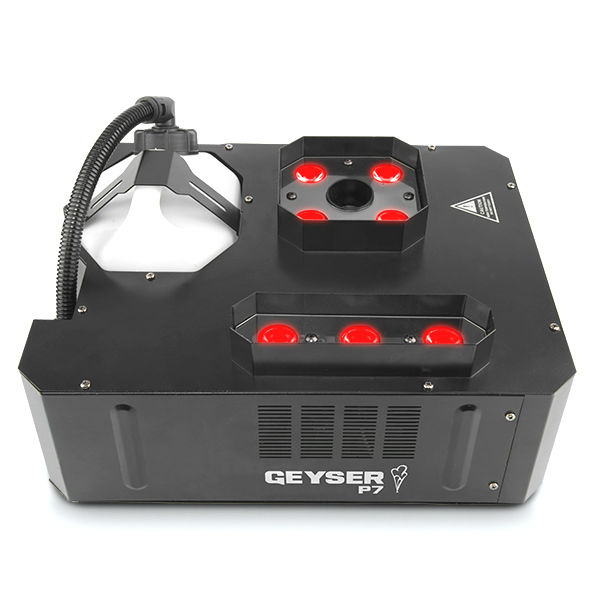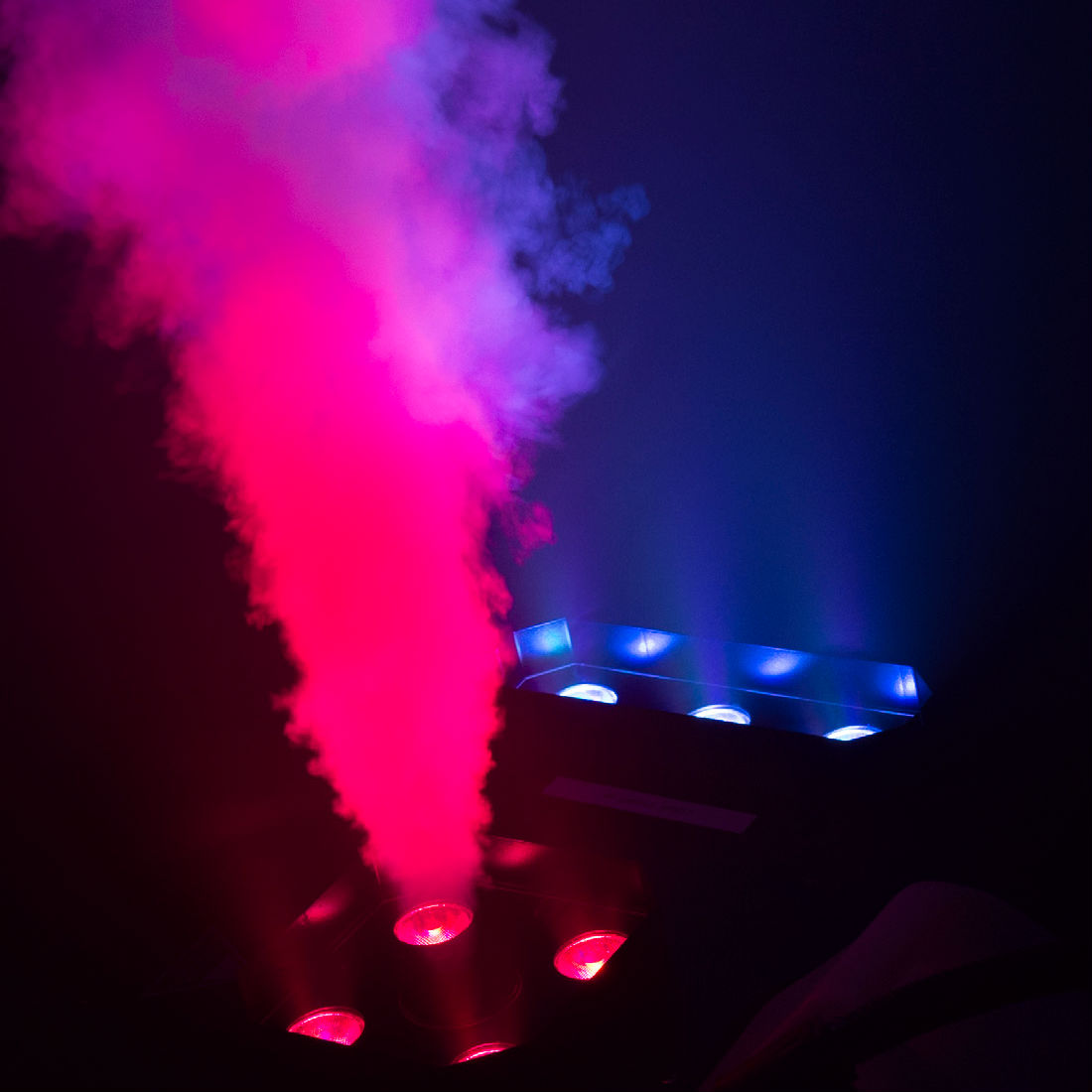That Ol' Blacklight Magic #2
I talked about blacklights a few months back, and in looking over that article I realized that, while I offered some tips on using blacklights for special effects, I didn't really explain how they do what they do. So, this week I'd like to remedy that with a crash course in ultraviolet radiation. Then we'll forget all about science and talk about having some fun with the darned things!
Basics first, blacklight really isn't black -- blacklights produce ultraviolet radiation. This is UVA light, not the harmful UVB radiation that can give you a sunburn or damage your eyes. The purplish glow that you see from a blacklight bulb is not the UV output, as some mistakenly assume. UV radiation falls outside of the visible range on the electromagnetic spectrum and cannot be seen except for the effect it has on phosphors.
A phosphor is a molecule that absorbs radiation and uses that energy to emit visible light at a specific wavelength (color). There are many different types of phosphors, and all of them produce different colors of visible light. This is a different process from how regular color pigments work, by the way. Regular color pigments simply reflect a certain wavelength of the visible spectrum. What this means is that the colors emitted by phosphors seem brighter than normal colors.
Incidentally, this is how modern detergents can "get your whites whiter". The detergent not only cleans your clothes, but also deposits phosphors on the cloth that emit white light under UV. When you're out in the sun, your white clothes reflect visible light and the phosphors emit white light in response the UVA in sunlight. Now that's "whiter than white!"
There are phosphors in lots of everyday products, too. A fun experiment is putting all sorts of things under the blacklight to see what reacts, and what color it emits. For example, many types of highlighter pen use phosphors to make the things you highlight stand out more. Quinine (one of the ingredients in tonic water) emits a weird greenish light under UV. This last I discovered personally, and to my chagrin, when I ordered a gin & tonic at a nightclub with lots of blacklights in use. I had to spend the rest of the evening explaining why I was drinking something that looked like it belonged on Star Trek.
There are also inks, paints and makeup available that use phosphors, but no visible pigments. These are often sold as "invisible UV" products and can make for some great special effects. For example, in a haunted house you might paint a portrait in regular paints and paint a spooky ghost or monster in the invisible UV paint. When your guests are in front of the portrait, turn on the blacklight and the monster "magically" appears in the painting! Of course, the most common use for invisible UV ink these days is for hand-stamping at nightclubs or events. The stamp stays invisible until the patron places their hand under a blacklight, usually located at the entrance.
Following are a few tips from my last article for getting the best performance out of your blacklight. Remember that the blacklight effect is easily overpowered by ambient light, so try to keep your space as dark as possible. The blacklight works best when it is close to the subject -- try to get the light as close as possible to what you want to fluoresce. Bear in mind that one blacklight may not be enough to cover a large space; you may to use need several units, side by side, especially if you want a powerful blacklight effect.
*********************************************
Theatre Effects Customer Service Department
service@theatrefx.com
www.theatrefx.com
Theatre Effects, 1810 Airport Exchange Blvd. #400, Erlanger, KY 41018
Phone: 1-800-791-7646 or 513-772-7646 Fax: 513-772-3579









